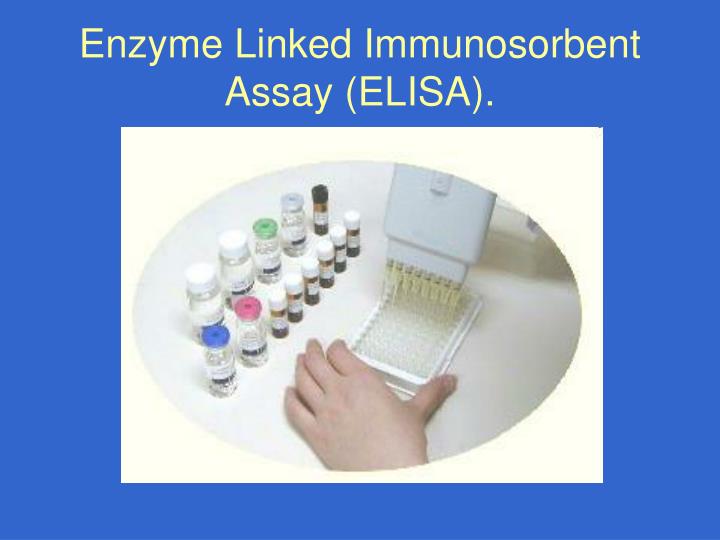

Next, the plate is rewashed to remove any unbound antibody and followed by the addition of a substrate/chromophore, such as alkaline phosphatase (AP) or Horseradish Peroxidase (HRP) to the plate, which results in a color change. In a direct ELISA, the primary detection antibody binds directly to the protein of interest. The plate is further incubated for one hour. After adding the buffer, the plate is rewashed, and a selected enzyme-conjugated primary detection antibody is added. This second step is important because it prevents the binding of any non-specific antibodies to the plate and minimizes false-positive results. Once the incubation step is completed, the next step is to wash the plates of any potential unbound antibody and block any unbound sites on the ELISA plate using agents like BSA, ovalbumin, aprotinin, or other animal proteins. The first binding step involves adding antigen to the plates, which is incubated for one hour at 37 degrees C or can be incubated at 4 degrees C overnight. īoth direct and indirect ELISAs begin with the coating of antigen to the ELISA plates.
#Enzyme linked immunosorbent assay serial#
In the ELISA protocol, usually, a serial dilution of concentrations is placed in the wells of the plate. After the results are measured, a standard curve from the serial dilutions data is plotted with a concentration on the x-axis using a log scale and absorbance on the y-axis using a linear scale. The wells are washed two or more times during each wash step, depending on the specific protocol being followed. ALP measures the yellow color of nitrophenol after room temperature incubation periods of 15to 30 minutes and usually uses P-Nitrophenyl-phosphate (pNPP) as its substrate.īetween each of the above four steps is a “wash” of the plate using a buffer, such as phosphate-buffered saline (PBS) and a non-ionic detergent, to remove unbound material. The substrate for HRP is hydrogen peroxide and results in a blue color change. However, the most commonly used horseradish peroxidase (HRP) and alkaline phosphatase (ALP). There are many substrates available for use in ELISA detection. ĭetection is carried out by the addition of a substrate that can generate a color. However, this method is qualitative and can determine only the presence or absence of an analyte and not its concentration. This technique can generate a color signal visible by naked-eye, with blue color for positive results and red color for negative results. The latest development, in 2012, was an ultrasensitive enzyme-based ELISA that manipulates nanoparticles as chromogenic reporters. However, some of these techniques do not rely on using enzyme-linked substrates but non-enzymatic reporters that utilize the principle of ELISA. Further advancement in the ELISA technique leads to the development of fluorogenic, quantitative PCR, and electrochemiluminescent reporters to generate signals. The first ELISA methodology involved chromogenic reporter molecules and substrates in generating observable color change that monitors the presence of antigen. Since then, the ELISA method has been used in many different applications and became a routine laboratory research and diagnostic method worldwide. Within the same year, scientists were able to quantify human chorionic gonadotropin in urine by using horseradish peroxidase. The new method was first employed by determining the levels of IgG in rabbit serum. This was done by conjugating tagged antigen and antibody with enzymes rather than radioactive iodine 125. The ELISA was developed by the modification of the radioimmunoassay (RIA). Two different research teams invented the direct ELISA simultaneously by scientists Eva Engvall and Peter Perlman and by Van Weemen and Schuurs. This article will discuss the basic principles, procedures, and clinical significance of the ELISA. ELISA testing is used to diagnose HIV infection, pregnancy tests, and blood typing, among others. This interaction is utilized in ELISA testing and allows for identifying specific protein antibodies and antigens, with only small amounts of a test sample. An antigen is a protein that can come from some foreign source and, when bound to an antibody, induces a cascade of events through the body’s immune system. This protein type has specific regions that bind to antigens. An antibody is a type of protein produced by an individual’s immune system. The detection of these products is accomplished by complexing antibodies and antigens to produce a measurable result. This immunological test is very sensitive and is used to detect and quantify substances, including antibodies, antigens, proteins, glycoproteins, and hormones. Enzyme-linked immunosorbent assay (ELISA) is a labeled immunoassay that is considered the gold standard of immunoassays.


 0 kommentar(er)
0 kommentar(er)
